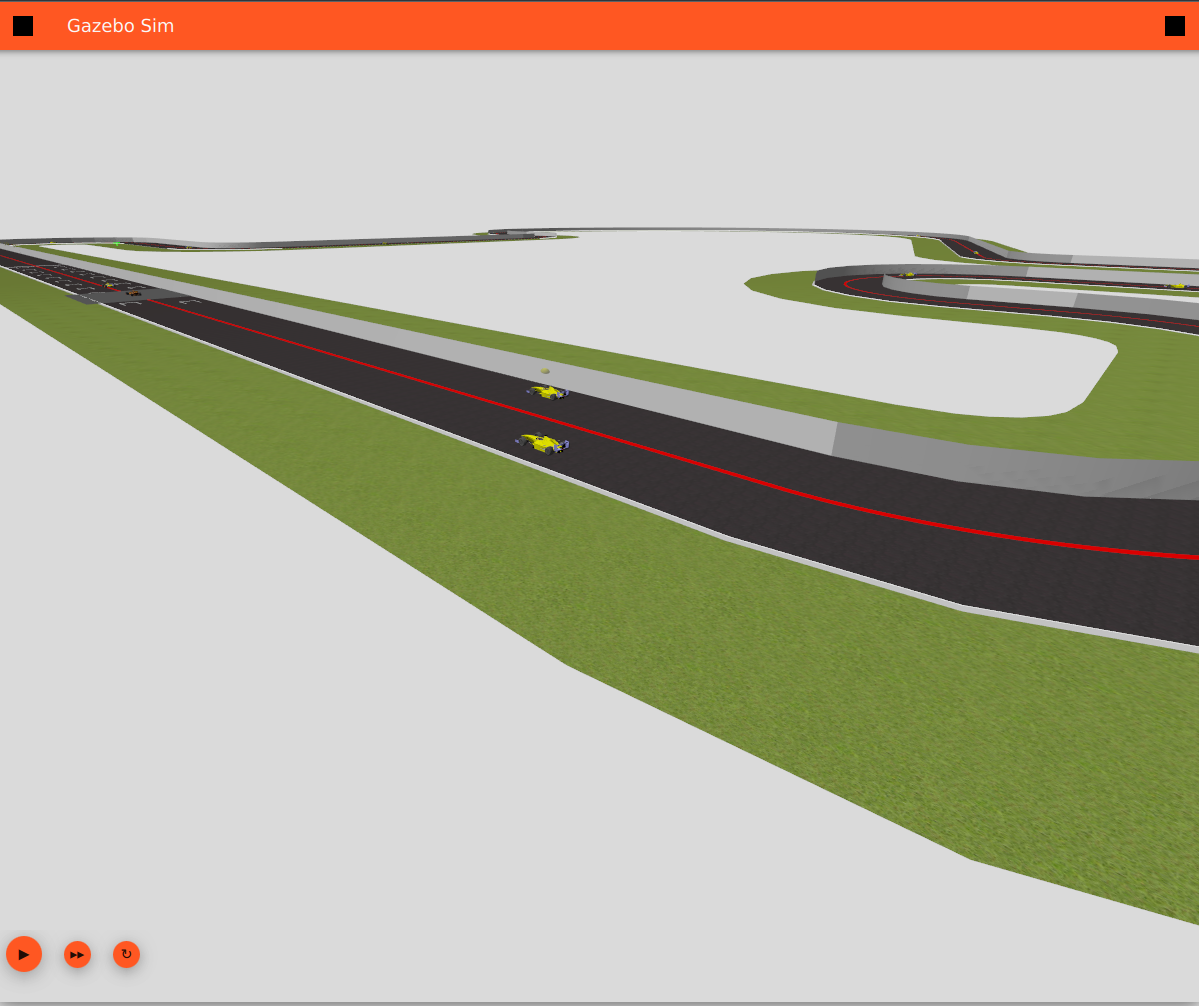Week 4: June 23 ~ June 30
Week 4 of the GSoC coding period was all about polishing our earlier migrations and digging deeper into the auto-parking scenario. After smoothing out minor glitches in the obstacle-avoidance world and the FollowLine exercise, I turned my attention to migrating the bateria_prius_3laser.world and the accompanying prius_ackermann_3laser model. While the world file is now loading in Gazebo Harmonic, I'm still chasing down a few static objects that didn't make it in—and parked cars are tripping over collision-geometry errors.
Preliminaries
At the end of Week 3 we had a working obstacle world, a basic auto-parking stub, and an optimized Ackermann plugin. Before tackling new migrations, I revisited the obstacle-avoidance world and the FollowLine exercise to ensure they remained stable under our latest Gazebo Harmonic updates.
Objectives
- Refine the simple_obstacle_world for consistency
- Fix remaining issues in the FollowLine exercise
- Migrate Worlds/bateria_prius_3laser.world to SDF 1.8
- Migrate the CustomRobots/ackermann_cars/models/prius_ackermann_3laser model
- Identify and resolve missing objects and collision-geometry errors
Execution
Obstacle Avoidance World Refinement
The week began with polishing our existing migrations to ensure they remained stable and consistent with our latest Gazebo Harmonic updates.
Refinement Tasks:
- Corrected a mismatched collision tag on one of the dummy cars
- Harmonized lighting and ground-plane material settings
- Verified obstacle positions still line up with our path tests

Screenshot showing corrected collision tags and harmonized lighting
FollowLine Exercise Fixes
The FollowLine exercise required several updates to maintain compatibility with our latest migration patterns and ensure smooth operation in both Classic and Harmonic environments.
Update Components:
- Updated topic remappings for the new /cmd_vel interface
- Removed deprecated plugin references
- Confirmed the robot follows the line in both classic and harmonic launches
Auto-Parking World Migration
The major focus of Week 4 was tackling the complex auto-parking scenario migration, which represents a significant step up in complexity from our previous work.
World Structure Conversion:
- Converted bateria_prius_3laser.world to SDF 1.8: updated physics, lighting, and scene definitions
- Ensured ground plane and road markings render correctly in Harmonic
- Spun up the world—static scenery loads, but a handful of props (curbs, signs) are still missing

Screenshot showing the progress in Autoparking migration
Prius Ackermann 3-Laser Model Migration
The Prius model migration involved updating a sophisticated vehicle model with multiple laser sensors and advanced control systems.
Model Updates:
- Updated the model's SDF: bumped version, modernized <visual> / <collision> tags, and attached three laser sensors
- Applied our AckermannSteering plugin configuration (as in Week 2)
- World launches without fatal errors, but the parked-car instances refuse to load due to invalid collision geometry
Challenges and Solutions
Missing Objects in World
One of the significant challenges encountered was that some scene elements weren't appearing in the migrated world.
Root Cause:
- Some scene elements weren't appearing because their <include> URIs pointed to Classic-style paths
Solution:
- Switched to model:// URIs, verified file names, and re-exported the missing meshes
Parked Cars Collision Geometry Errors
The most complex challenge was resolving collision geometry issues with the parked car models.
Issue Encountered:
- Gazebo Harmonic rejects several parked-car collision meshes with messages about "unsupported geometry type"
Technical Insights and Learnings
Migration Pattern Insights
Week 4 revealed several important insights about managing complex world migrations:
- Include paths matter: Even a single wrong URI can silently drop an entire model
- Collision simplification: Complex meshes often need convex-hull fallbacks for Harmonic compatibility
- Incremental validation: Spawning one model at a time helps isolate failures quickly
Workflow Optimization
The migration work highlighted the importance of systematic approaches:
- Component-by-component imports: Prevent "everything fails at once" scenarios
- Automated URI checks: Can catch missing assets before launch
- Mesh pre-processing scripts: Save time when converting large numbers of collision files
Next Steps and Week 5 Focus
1. Complete Auto-Parking Migration
- Finish importing all static props into the auto-parking world
- Resolve the remaining collision geometry errors on the parked-car models
- Run end-to-end parking maneuvers to validate sensor and plugin integrations
2. Performance Analysis
- Begin performance benchmarking to compare Classic vs. Harmonic for this scenario
- Optimize resource usage for complex multi-sensor simulations
- Validate real-time performance requirements
3. Integration Testing
- Test sensor data integration with ROS2 navigation stack
- Validate multi-laser sensor coordination
- Ensure proper coordinate frame relationships
Reflection and Forward Look
Week 4 was a reality check: migrating full simulation scenarios exposes deeper file-organization and geometry challenges than single models. That said, each hurdle teaches us how to build more robust migration tooling—and sets us up to finalize the auto-parking world in Week 5.
The progression from simple model migrations to complex world scenarios continues to reveal new layers of complexity in the Gazebo migration process. However, the systematic approach we've developed and the lessons learned from each challenge are building a solid foundation for comprehensive migration solutions.
Key Takeaways:
- Verify every <include> and <mesh> URI in your world file
- Simplify collision meshes early—complex geometry rarely survives an SDF version bump
- Keep your branch history tidy: small, focused commits make rollbacks painless
- Incremental testing prevents cascading failures in complex scenarios
Looking ahead to Week 5, I'm excited to complete the auto-parking migration and begin comprehensive performance analysis. The foundation we've built over the past four weeks positions us well for delivering robust, production-ready migration solutions that the robotics community can rely on.
I'm looking forward to wrapping up the auto-parking migration next week and turning our attention to comprehensive testing and performance tuning!
Looking ahead to Week 4, I'm excited to tackle the remaining auto-parking challenges and establish our migration work as a comprehensive solution for the robotics community. The foundation built over the first three weeks positions us well for accelerated progress and expanding impact.
The journey from basic model migration to optimized world scenarios showcases the potential of systematic, well-tested migration approaches. I look forward to continuing this momentum and delivering robust, high-quality migration solutions!